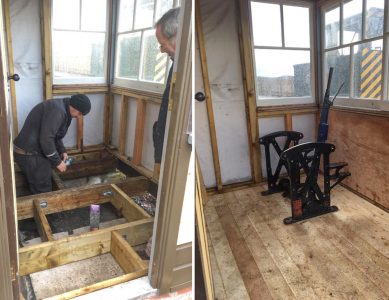The old adage that life on the BLR gets busier after the end of the season is so true. With so much activity happening with the BLR and its infrastructure, we still had time to rejoice at three pieces of very good news indeed.
May the best come first. The Bala Lake Railway has received a grant from the Welsh Government Cultural Recovery Fund for £149,915. This is in no way related to the BLR Trust but is to provide funds for much of the winter work and maintenance programmes as well as overheads, wages and other improvements to the railway. This is an enormous fillip to all at Llanuwchllyn and gives a bit of financial security to the railway in these very testing times. Needless to say, the railway is extremely grateful to the Welsh Government for this timely benefaction.
The second piece of good news is that the Welsh Government has announced a relaxation to travel restrictions, thus anyone in the English and/or Scottish Tiers 1 and 2 can now travel to Wales. This is of immense help to the BLR as so many of our volunteers live outside Wales and can therefore get back to some serious volunteering, and there is a lot of do, which we will demonstrate later.
Thirdly, the December issue of The Railway Magazine featured a six-page article on the BLR Trust and its progress on the return of the line to Bala Town. There have been articles before on this topic but this is by far the most comprehensive and bristles with positivity. If not already seen, do buy a copy (there is a free calendar included) and support this mammoth project which will make an enormous difference to the BLR, the town of Bala and the whole surrounding area.
Volunteers have been very busy doing a multitude of tasks in the last month. The Bala end points of the Llangower loop had six sleepers replaced with a further six replaced at the beginning of the loop itself, both tasks being tedious in the extreme as the old sleepers were decidedly reluctant to move at all. While at that location, the point blades were adjusted so they can now be traversed in both directions. While at Llangower, BLR Director Martin Levy and Dan Laidlaw have also been busy improving the signal box which is now fitted with polycarbonate screens to protect the windows.
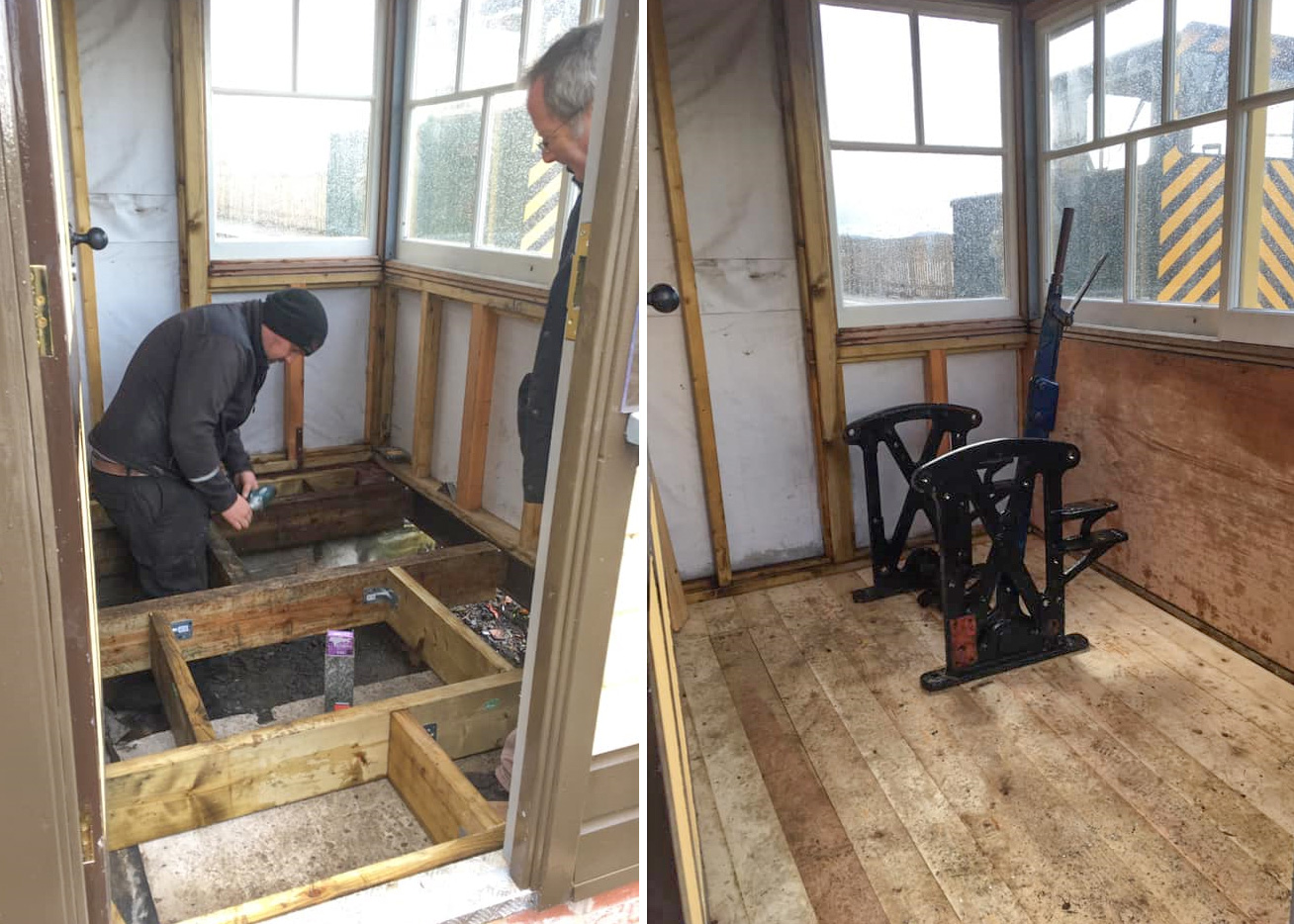
Further down the line, closer to Bungalow Bridge, a considerable amount of branches and foliage was cut down and chipped, thus greatly improving the views for passengers next year. Such was the enthusiasm of the chopping team that the chipper broke down, so the inevitable remaining mound of branches will be dealt with at a later date.
Much work has happened on the coaching stock with the major job being carried out on the Guard’s coach which has seen it stripped down to a chassis and bare framework. Because of the way the coaches were constructed, they are relatively easy to adapt to doors on both sides in anticipation of the needs at Bala Town Station in the future. The chassis of the Guard’s coach has been repainted and the frames primed. Very soon, the roof and sides will be refitted, after which Chief Engineer Rob Houghton will respray in the traditional BLR colours. Such has been the productivity of the engineering team and willing volunteers that after the Guard’s coach is completed, there will only be one coach left to modify and renovate.
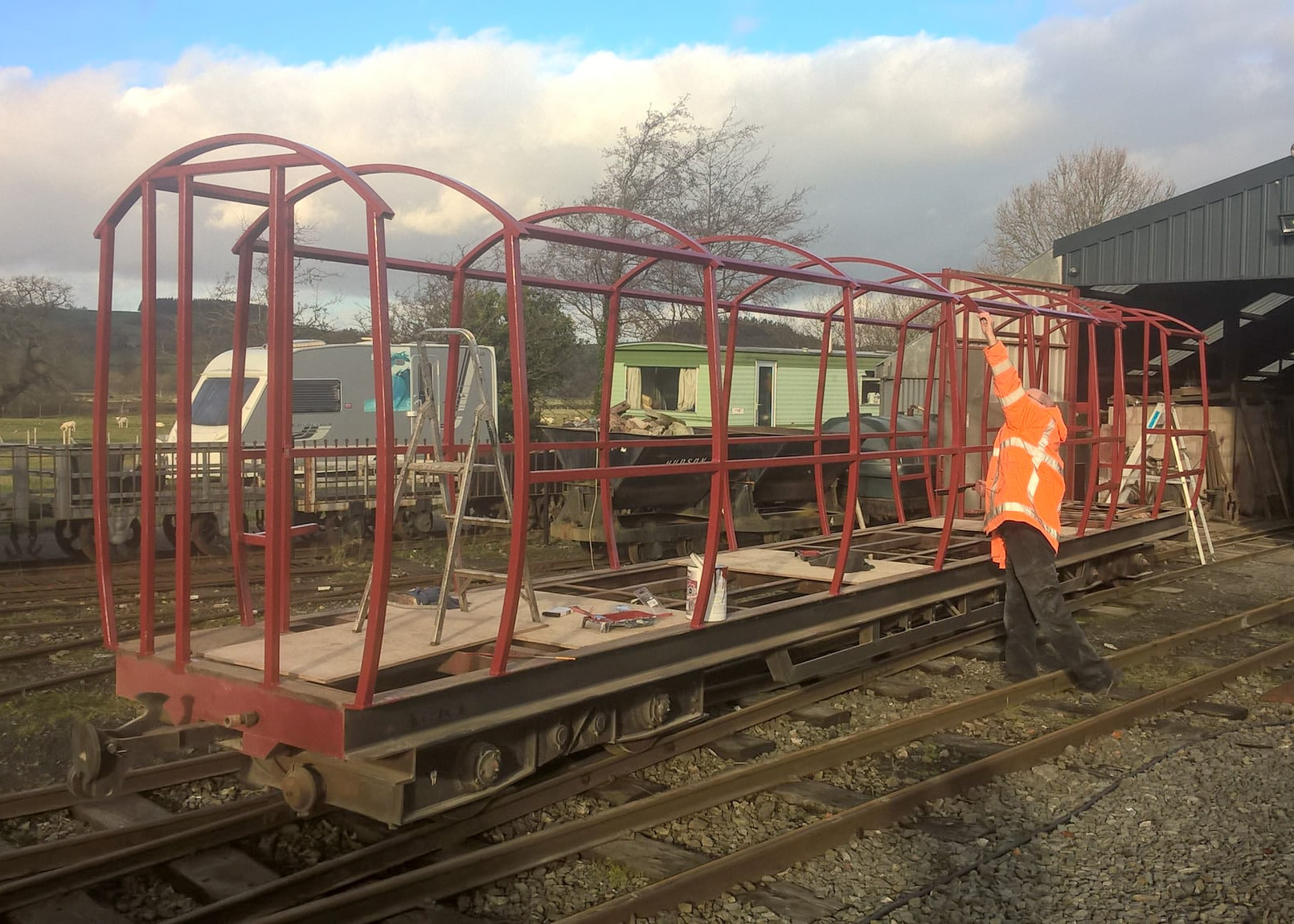
Other track activities are the annual track relaying and to this end, a start has been made on removing the spikes from alternate sleepers on the next designated stretch for attention, awaiting the delivery to site of a fresh batch of sleepers any day now after having been cut in half and pre-drilled by Rob Houghton. Again, the more volunteers can assist, the better the whole plan will work. The next working weekend is scheduled for the 12th – 13th December which runs into a working week from the 14th to 17th for the track relay, thus if you can help, please contact the railway as your assistance will be greatly appreciated.
An intrinsic part of railway life is the Tombola. Barbara Cooper and Hilary Moorhouse are frequently to be seen at their stall at Special Events and Galas, and any profits are ploughed back in to the railway. As a direct result of their hard work, they were able to have created some new signs for Glan Llyn Halt, aka Flag Halt, the setting for our Santa and Halloween Specials, and we proudly show the results of their endeavours which speak volumes for their hard work.
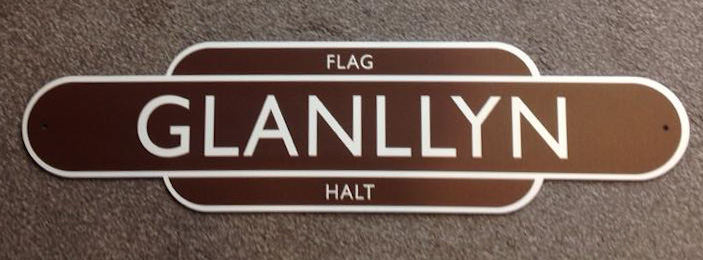
Glan Llyn has an interesting history to the name and in case the original article of August 2019 was missed, we reprint a brief synopsis of the two names enjoyed by this little halt.
Flag Halt, alternatively known as Glan Llyn, is well-known but its history is of interest as the name has always been unofficially official. When the original standard gauge railway was being constructed in the 19th century, one of the directors, Sir Watkin Williams-Wynn, happened to own a sizeable lodge called Glan Llyn on the north shore of the lake. The halt was built on the opposite shore for his use where it was the practice to raise a flag to signal to his staff to row across and collect Sir Watkin and/or his guests, although there is speculation as to how this was achieved if the prevailing wind was whistling up the lake. Glan Llyn Halt was always known in railway circles as Flag Halt and even the official GWR timetables of the period listed it thus.
The Penrhyn Coach, after the work carried out last month, has been receiving more detailed attention. The photo of the original coach in the Penrhyn Museum shows slightly recessed panels above the windows and the new coach’s creator, David Hale, wondered why they would have gone to such trouble.
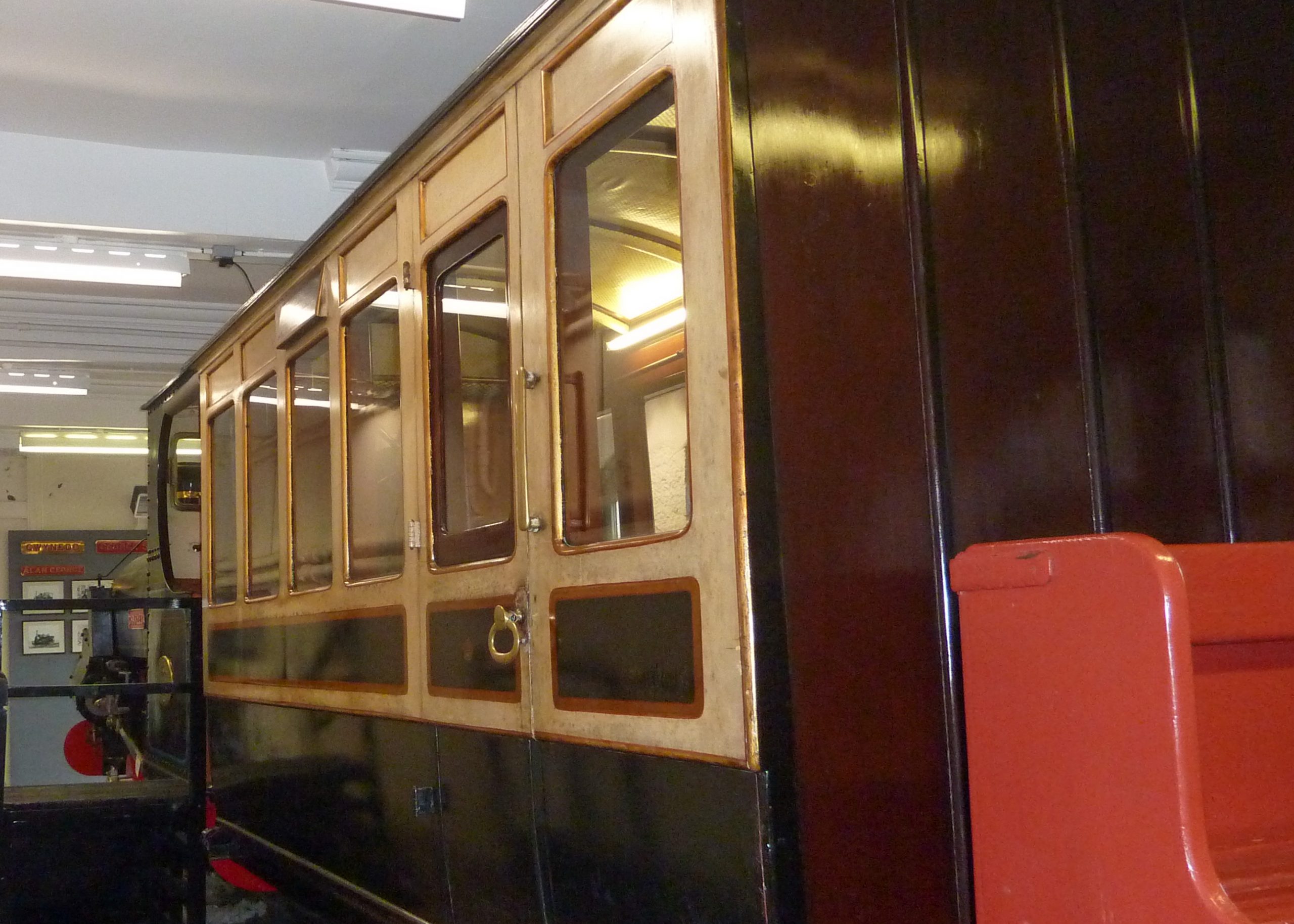
He takes up the tale.
On the new carriage, these recesses will be represented by half round mouldings pinned and glued to the surface of the sides once they have received the final coat of paint. The moulding has already been cut to size with mitred ends. There is also to be a half round moulding running the length of both sides at ‘waist’ level, and running upwards at the ends of the sides of the roof from the ‘waist’. The mouldings have been primed, painted gold and are ready to be applied. Similarly, from the photograph it can be seen that a heavier moulding runs the full length of the side along the bottom edge. Again, this timber has been machined to size and is primed ready for fixing.
This serves to highlight yet again the incredible attention to detail that David Hale has put into this remarkable project. He plans to visit Llanuwchllyn again as soon as possible.
Last month, we reported on the arrival of John and Hilary Moorhouse’s Avonside at the BLR. This month, we are delighted to publish John’s account of the search for, acquisition of and the journey back to the UK of this fascinating little loco.
Avonside Works No.1909 was built by Avonside Engineering Ltd. Bristol for Farleigh Sugar Mill near Mackay in Queensland, Australia. An 0-4-0 side tank steam locomotive, it was dispatched to its antipodean home with sister engine No.1910 in March 1922. In total, four such engines were sent to Australia but only No.1909 has survived into preservation.
The locomotive initially worked at the nearby Homebush Tramway but in 1923 was transferred to Farleigh Mill where it remained in service until steam was replaced by diesel locomotives in 1962. Two years later, the locomotive was placed on a plinth in the Farleigh Mill Sports Ground where it remained until 1984 when it was removed due to safety fears. It was then purchased by the late Eric Gibson who moved the engine to his home, storing it under an open side shelter which gave basic protection from the weather.
Where do my wife Hilary and I come into the picture? After long seeking to purchase a narrow gauge engine, our interest in No.1909 initially began in 2019. Our search criteria was for a British built loco which met the axle load and size profile to allow to it operate at the BLR - a criteria which significantly restricted our choice. Several locomotives were identified, some here in the UK and some abroad, and we determined that No.1909 looked promising but first, we had to find it! The last published records showed it as still being 'near Mackay', but after a few sessions on Google Earth, we found it, peering out of an open shed on Gibson Road in Racecourse, Mackay.
Through a series of friends and acquaintances, we found a contact near Mackay who located No.1909, sitting untouched in her home of the last 36 years. A man who was cutting the grass nearby proved to be the loco's present owner - Mr Glen Gibson. He had inherited No.1909 when his father died, and he was happy both for photographs to be taken and for his contact details to be passed along.
Our son Peter lives in Brisbane; he contacted Glen and acted as intermediary, making a trip to view the engine. After viewing numerous photographs, and completing a video call, we made an offer to buy No.1909, subject to us obtaining the necessary export licence from the Australian authorities, an offer which Glen accepted.
We knew that obtaining the necessary export license would be a detailed and protracted affair as an object like a locomotive comes under the category of Moveable Cultural Asset. We made a successful application and an export license was granted on 11th August 2020.
Quotations for transporting No.1909 back to the UK were sought, a booking was made and by 20th August, a 20ft container was positioned in front of the shed housing the loco. Peter had already spent several days preparing No.1909 for her move, and soon the Avonside was in the container, securely tied down. The little Avonside commenced the long journey home on 2nd September, her container being moved to Mackay transit yard before transferring on to an Australian Railway container train for the 600 mile journey south to Brisbane. I suspect it was the fastest a 2ft Avonside has ever moved! Nine days later, the loco was loaded on to the Maltese registered container ship CMA CGM Loire, soon thereafter departing Brisbane for Tanjung Pelepas in Malaysia. Here No.1909 transferred on to the Liberian registered MSC Venice, departing for Felixstowe on Wednesday, 23rd of September, duly arriving on Friday, 16th of October.
Onward transport to Llanuwchllyn slipped a little due to a delay in clearing customs, but at 10.00hrs on 22nd October, an HGV pulled into Llanuwchllyn station yard, carefully reversing down to the loco sidings where a road crane was waiting. The container, which will continue to be No.1909's home for the time being, was then gently lowered into a prepared place beside the old GWR goods store and thus, after a 98 year Australian odyssey, our little Avonside's long journey home was over.
Having been idle for decades, the engineering team at the BLR got busy lubricating anything and everything on the loco, and our two short videos shows our diesel Murphy slowly easing the Avonside out of her container with the wheels and motion getting the first exercise in a very long time.
And finally……. the Directors, Staff, Volunteers and all involved with the BLR would like to wish all our supporters and friends the very best of wishes for the festive season and 2021. It has been quite a year but we are winning!
We are also delighted to include Tim Williams’ short compilation film which shows the atmosphere, variety and fun of the BLR to perfection, particularly a journey in the snow. Nothing further need be said. Just relax and enjoy it.
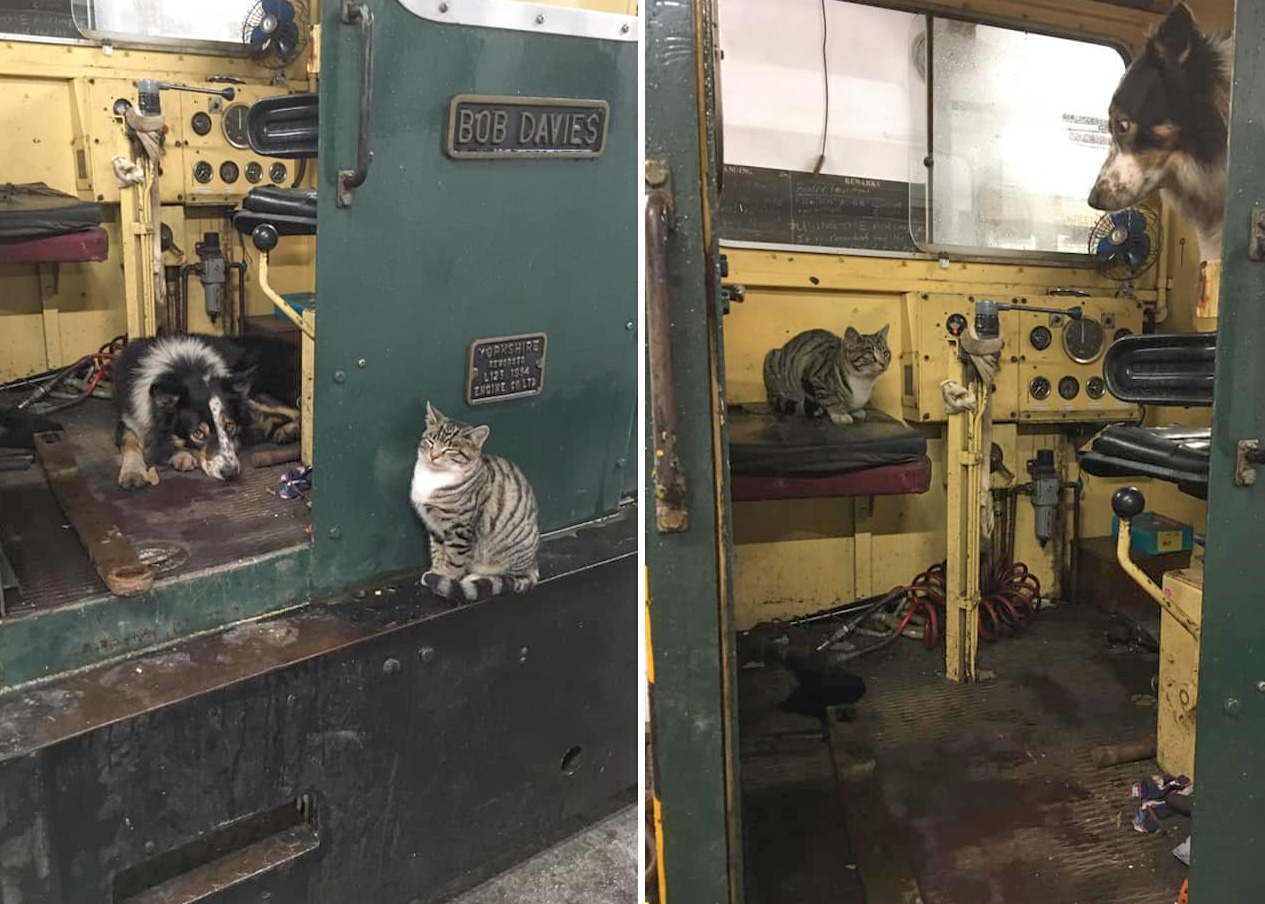
One final positive thought; within two weeks, the days start getting longer and that means the railway will be that much closer to re-opening. We cannot wait.

